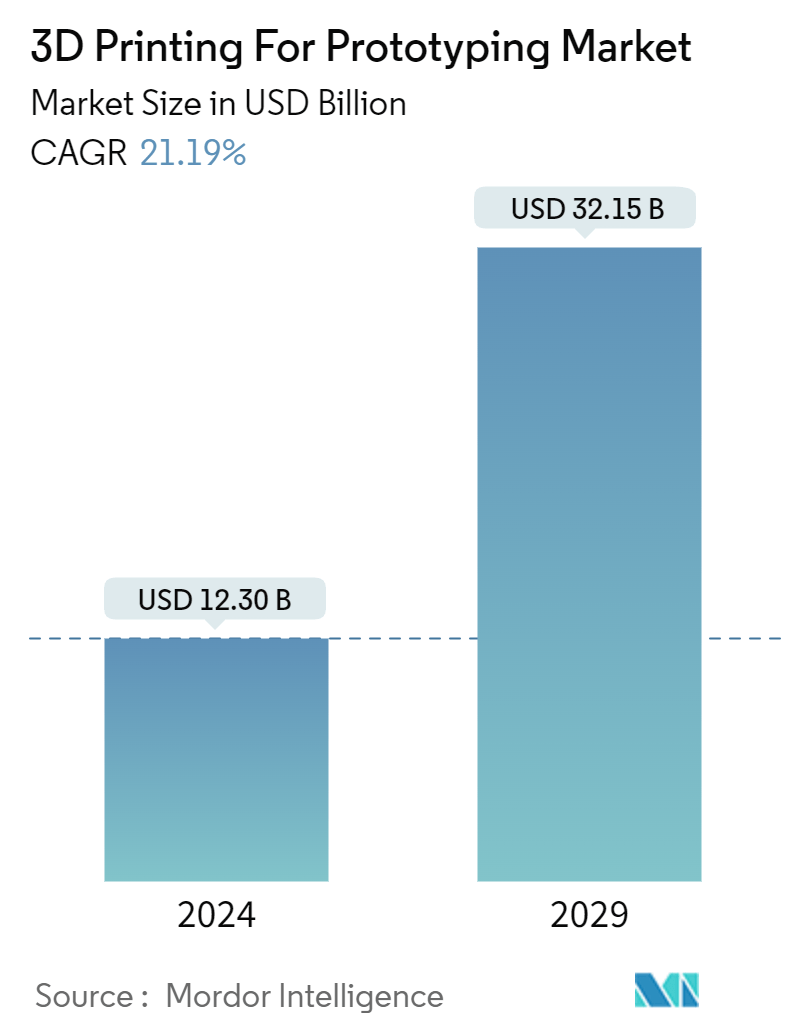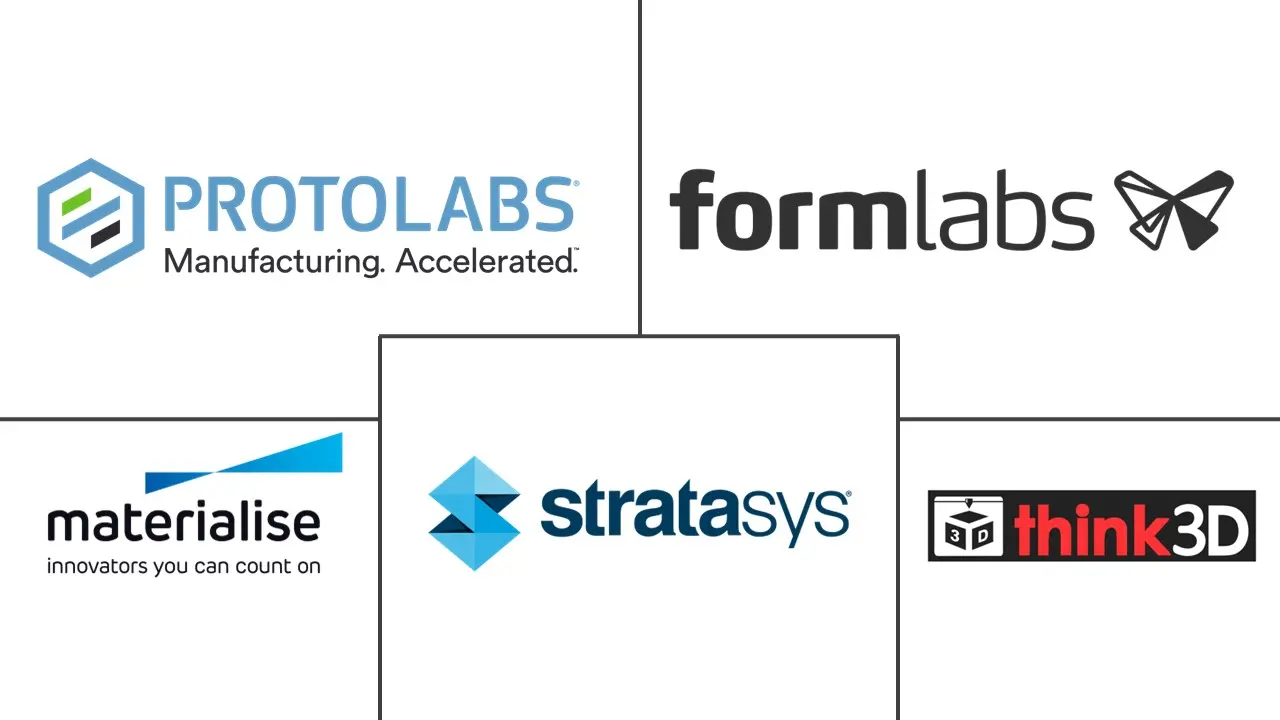Market Size of 3D Printing For Prototyping Industry

| Study Period | 2019 - 2029 |
| Market Size (2024) | USD 12.30 Billion |
| Market Size (2029) | USD 32.15 Billion |
| CAGR (2024 - 2029) | 21.19 % |
| Fastest Growing Market | Asia Pacific |
| Largest Market | North America |
Major Players
*Disclaimer: Major Players sorted in no particular order |
3D Printing For Prototyping Market Analysis
The 3D Printing For Prototyping Market size is estimated at USD 12.30 billion in 2024, and is expected to reach USD 32.15 billion by 2029, growing at a CAGR of 21.19% during the forecast period (2024-2029).
For the past several decades, 3D printing has been a swift and dependable method for producing multiple design iterations in prototyping. This approach reduces risks, conserves resources during product development, and accelerates decision-making, especially when selecting from various designs.
- 3D printing in functional prototyping enables product developers to create several iterations before moving to production tooling. This capability helps companies sidestep costly errors before launching new products. Moreover, functional prototypes can be crafted using materials closely resembling those of the final product, allowing them to be utilized during the product testing phase. Access to these physical prototypes also empowers companies to identify potential flaws before investing in expensive injection moulding tools.
- Owing to technologies like 3D printing, CAD, and rapid prototyping, businesses can tailor products to consumer preferences. As research and development intensifies across various sectors, the significance of 3D printing in prototyping grows, paving the way for even more advanced techniques.
- In recent years, the adoption of rapid prototyping has grown significantly across various end user industries as it significantly reduces material wastage for manufacturers due to its heightened accuracy and error-free operation. This precision has made 3D printing prototyping a favored choice in sectors like aviation and automotive, aiding designers in grasping their designs and potential flaws.
- Moreover, as the variety of compatible materials continues to expand, the adoption of 3D printing for prototyping is set to increase. Currently, a diverse array of materials enables product development teams to rigorously test prototypes under real-world conditions, assessing their performance against chemicals, weather elements, and mechanical stresses. Additionally, an expanding selection of materials closely resembles the final product, such as rubber-like substances and wood-filled composites.
- Despite its advantages, the market faces challenges due to the high costs associated with rapid prototyping and the demand for skilled professionals. When a manufacturing company embraces rapid prototyping technology, it incurs a significant initial investment. Additionally, the software essential for rapid prototyping comes with a hefty price tag. Moreover, as application areas evolve, the need to update rendering software further escalates the overall system costs.

